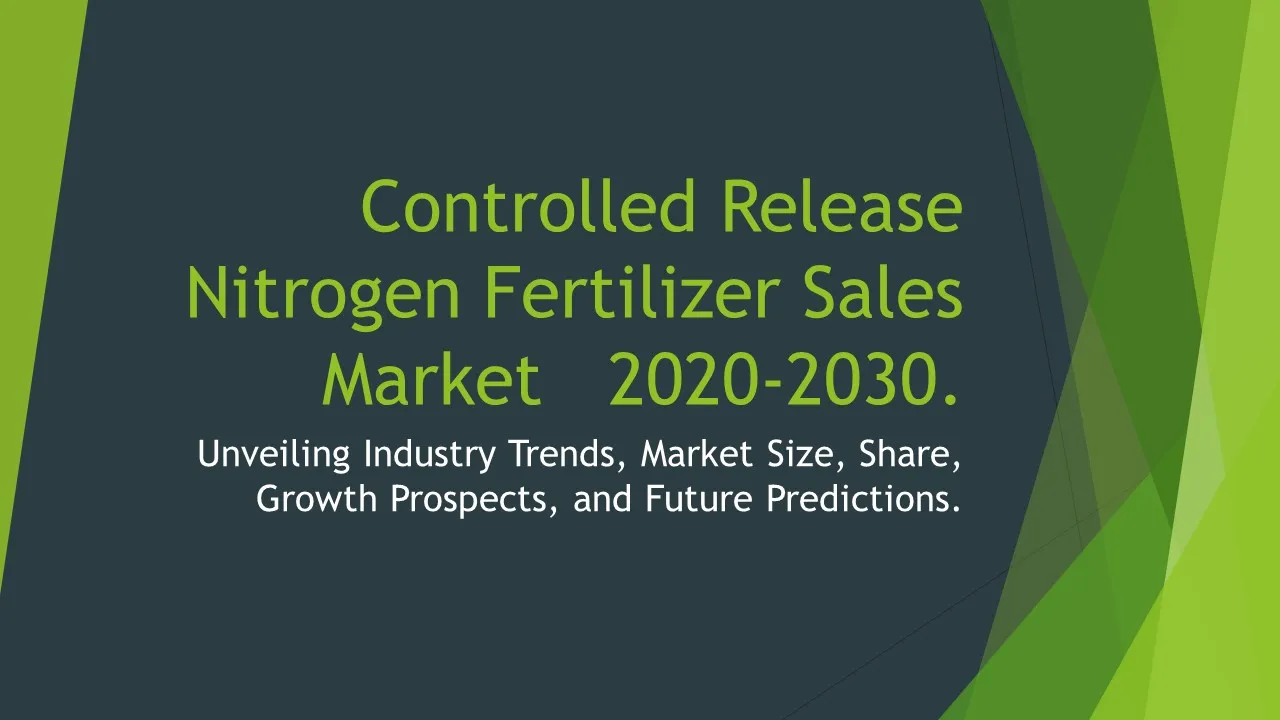Feed Protease
Protease Market Segments - by Product Type (Microbial Protease, Animal-derived Protease, Plant-derived Protease, Fungal Protease, and Others), Application (Food & Beverages, Pharmaceuticals, Animal Feed, Textile Industry, and Others), Distribution Channel (Online Stores, Supermarkets/Hypermarkets, Specialty Stores, Industrial/B2B, and Others), Ingredient Type (Alkaline Protease, Acid Protease, Neutral Protease, Metallo Protease, and Others), and Region (Asia Pacific, North America, Latin America, Europe, and Middle East & Africa) - Global Industry Analysis, Growth, Share, Size, Trends, and Forecast 2025-2035
- Report Preview
- Table Of Content
- Segments
- Methodology
Feed Protease Market Outlook
The global feed protease market is projected to reach a valuation of approximately USD 1.2 billion by 2035, with a compound annual growth rate (CAGR) of 9.5% during the forecast period from 2025 to 2035. The growth of this market is primarily driven by the increasing demand for protein-rich animal feed to meet the dietary needs of livestock and aquaculture, along with the rising focus on improving feed efficiency and nutrition. Moreover, the growing consciousness among livestock producers regarding the sustainable and cost-effective production of animal proteins also significantly contributes to the market's expansion. The advancements in biotechnology and enzyme formulations further enhance the efficacy of protease in feed applications, leading to better nutrient absorption and growth performance in animals. As consumers become more health-conscious and demand higher quality animal products, the need for effective feed additives like proteases becomes even more critical.
Growth Factor of the Market
Several factors are propelling the growth of the feed protease market. Firstly, the rising global population has led to a higher demand for animal protein, which in turn boosts the consumption of feed additives to enhance feed quality and animal growth. Secondly, the increasing prevalence of diseases in livestock has prompted farmers to seek solutions that can improve animal health and feed conversion rates. Furthermore, regulatory bodies are encouraging the use of enzymes such as proteases to minimize the environmental impact of livestock farming by reducing nitrogen emissions through better feed utilization. Additionally, the trend towards natural and organic farming practices has resulted in an uptick in the adoption of proteases derived from natural sources, appealing to a broader consumer base. Finally, the technological advancements in protease production methods and formulations are expected to foster innovation and lead to new applications, further stimulating market growth.
Key Highlights of the Market
- Projected market size of USD 1.2 billion by 2035 with a CAGR of 9.5%
- Increased demand for protein-rich animal feed and sustainable farming practices
- Technological advancements enhancing the effectiveness of protease formulations
- Regulatory encouragement for the use of enzymes to reduce environmental impact
- Broadening applications across various industries beyond animal feed, such as textiles and pharmaceuticals
By Product Type
Microbial Protease:
Microbial proteases are enzymes produced by microorganisms such as bacteria and fungi, and they hold a significant market share in the feed protease segment. These proteases are favored for their stability across various pH levels and temperatures, making them highly effective in different feed formulations. The growing adoption of microbial proteases is attributed to their ability to improve nutrient digestibility and enhance the overall growth performance of livestock. Furthermore, the increase in research and development activities focusing on the identification and genetic optimization of microbial strains is expected to drive the market for these proteases in the coming years.
Animal-derived Protease:
Animal-derived proteases are obtained from the gastric juices or tissues of animals and have been traditionally used in the animal feed sector. While these proteases are effective in protein digestion, their use has been declining due to ethical concerns and the rising popularity of plant-based alternatives. Nonetheless, they still play a crucial role in specific feed applications, particularly in the production of premium animal feeds. The product's efficacy in enhancing protein digestibility and supporting the health of certain livestock species ensures that animal-derived proteases will continue to have a place in the market, although with a gradually shrinking share.
Plant-derived Protease:
Plant-derived proteases represent a growing segment of the feed protease market, driven by the increasing demand for natural and non-GMO feed additives. These enzymes, derived from sources such as papaya and pineapple, are considered safer for animal health and the environment. Their ability to improve amino acid availability in the diet is particularly significant for monogastric animals like pigs and poultry. As consumers become more aware of food safety and the impact of feed additives on animal welfare, the demand for plant-derived proteases is expected to rise, offering lucrative opportunities for producers in this segment.
Fungal Protease:
Fungal proteases, produced by fungi such as Aspergillus oryzae, are celebrated for their efficiency in breaking down proteins and enhancing nutrient absorption in animal feed. These enzymes are particularly effective in high-temperature processing conditions, making them suitable for pelleted feeds. As the feed industry emphasizes the need for effective and efficient feed use, the demand for fungal proteases is projected to grow. Additionally, ongoing advancements in fermentation technology and enzyme production are likely to bolster the supply of high-quality fungal proteases in the market.
Others:
This category includes various proteases that do not fall under the aforementioned types, such as synthetic or engineered proteases tailored for specific applications. While their market share may be limited compared to traditional protease types, they offer unique advantages in terms of targeted action and customization. The development of new protease formulations aimed at enhancing feed efficiency and reducing feed costs can provide a competitive edge for producers using these innovative enzymes. As the demand for tailored solutions in animal nutrition continues to evolve, the 'Others' segment could see promising growth in the future.
By Application
Food & Beverages:
Proteases find extensive applications in the food and beverage industry, where they are utilized to enhance the flavor, texture, and processing of various products. They play a crucial role in the production of protein hydrolysates, which are used as flavor enhancers and functional ingredients in food formulations. The trend towards healthier food options and the growing consumer preference for protein-rich diets are driving the demand for proteases in this sector. Moreover, proteases are essential in the brewing industry for breaking down proteins that can lead to haze formation in beer, thereby improving quality and shelf-life.
Pharmaceuticals:
In the pharmaceuticals sector, proteases are increasingly being recognized for their therapeutic potential, particularly in drug formulation and delivery. They are involved in the development of protease inhibitors that are critical in treating various diseases, including viral infections and cancer. The rising incidence of chronic diseases and the ongoing research into enzyme-based therapies are expected to propel the demand for proteases in this application area. Furthermore, advancements in drug delivery systems that leverage proteases could lead to more effective treatments, further enhancing the market for pharmaceuticals involving protease utilization.
Animal Feed:
The animal feed application segment is the largest consumer of proteases, driven by the need for enhancing feed efficiency and improving growth rates in livestock and aquaculture. Proteases aid in the digestion of dietary proteins, leading to better nutrient absorption and reduced feed costs. The increasing focus on animal health and welfare, along with the rising global demand for meat and dairy products, is propelling the growth of this segment. Additionally, the shift towards sustainable and environmentally friendly farming practices is leading to the increased use of feed additives like proteases that promote efficient feed utilization and minimize waste.
Textile Industry:
Proteases are also finding applications in the textile industry, particularly in the processing of animal-derived fibers such as wool and silk. They are used for degreasing and removing impurities, thereby enhancing the quality of the final textile products. The demand for eco-friendly and sustainable textile processing methods is driving the adoption of proteases in this sector. As consumers become more environmentally conscious, the textile industry is likely to continue shifting towards greener alternatives, further boosting the market for proteases in textile applications.
Others:
This segment encompasses various niche applications of proteases, including their use in wastewater treatment and biofuel production. In wastewater treatment, proteases can help in the degradation of organic matter, thereby improving the efficiency of treatment processes. Similarly, in biofuel production, proteases can aid in breaking down proteins in biomass, enhancing the overall yield of biofuels. While these applications may not constitute the largest share of the market, they present unique opportunities for growth and innovation as industries seek sustainable solutions to meet regulatory and environmental standards.
By Distribution Channel
Online Stores:
Online stores are rapidly gaining traction as a significant distribution channel for feed proteases, driven by the increasing shift towards e-commerce and the convenience it offers to consumers and businesses alike. The broad selection of products available online allows buyers to compare options easily and make informed decisions. As digital platforms continue to evolve, they provide enhanced access to niche and specialized protease products, catering to specific needs within the agricultural and animal husbandry sectors. The rise of online sales is also facilitating direct engagement between producers and end-users, leading to better customer relationships and tailored solutions.
Supermarkets/Hypermarkets:
Supermarkets and hypermarkets remain traditional yet vital distribution channels for feed protease products, especially in regions with well-established retail networks. These outlets offer a diverse range of products under one roof, giving consumers the convenience of purchasing various animal feed ingredients, including proteases. The physical presence of these retailers provides assurance regarding product quality and enables consumers to seek advice from knowledgeable staff. The trend of promoting health and wellness in animal husbandry through quality feed products further enhances the demand for proteases in these retail environments.
Specialty Stores:
Specialty stores focusing on animal nutrition and feed additives serve a crucial role in distributing feed proteases to targeted customer segments. These stores often provide expert advice and a curated selection of products that cater to specific animal types and dietary requirements. The growing emphasis on specialized nutrition for livestock, along with the increasing awareness of the benefits of protease inclusion in animal feed, has led to an uptick in sales through specialty stores. As farmers and producers seek high-quality, targeted feed solutions, the relevance of specialty retail channels is expected to expand.
Industrial/B2B:
The industrial/B2B distribution channel plays an essential role in the procurement of feed proteases for large-scale operations, including feed manufacturers and livestock producers. This channel allows businesses to establish long-term relationships with suppliers, ensuring a steady supply of high-quality enzymes necessary for consistent feed production. The increasing consolidation within the feed industry and the emphasis on efficient supply chain management are driving the growth of the B2B sector. As more companies recognize the value of protease enzymes in optimizing feed formulations, the industrial/B2B channel is poised for significant growth.
Others:
This category encompasses various unconventional distribution channels, such as direct sales from manufacturers and agricultural co-operatives. These channels may cater to specific regional markets or offer customized solutions tailored to local needs. As the demand for specialized feed additives continues to rise, alternative distribution channels can provide flexibility and responsiveness to market trends. Companies leveraging these unique channels can access niche markets that larger retailers might overlook, thereby capitalizing on emerging opportunities within the feed protease sector.
By Ingredient Type
Alkaline Protease:
Alkaline proteases are widely utilized in the feed industry due to their stability in high pH environments, making them particularly beneficial for processing feeds aimed at monogastric animals like poultry and swine. These enzymes enhance protein digestibility and improve amino acid availability, which are crucial for optimal growth and development. The increasing application of alkaline proteases in feed formulations is driven by the rising demand for efficient feed conversion rates and the need to reduce environmental impacts associated with livestock production. The versatility and efficacy of alkaline proteases position them as a key ingredient in modern animal nutrition.
Acid Protease:
Acid proteases are essential in the digestion of feed proteins in acidic environments, such as those found in the stomachs of animals. Their ability to work effectively in lower pH conditions makes them highly valuable in formulating feeds that target ruminants and other species with acidic digestive systems. The growing awareness of the importance of balanced nutrition and the role of proteases in enhancing protein utilization are driving the demand for acid proteases in feed applications. As livestock producers increasingly prioritize animal health and performance, the need for effective acid protease formulations is likely to expand.
Neutral Protease:
Neutral proteases are characterized by their operational efficiency at neutral pH levels, making them suitable for a broad range of feed formulations. These enzymes are particularly advantageous in improving the digestibility of dietary proteins across various animal species. The growing trend towards optimizing feed formulations for better nutrient absorption is propelling the demand for neutral proteases in the market. As awareness about the benefits of tailored nutrition continues to rise, neutral proteases are expected to gain traction within the feed industry, appealing to a diverse array of livestock producers.
Metallo Protease:
Metallo proteases, which require metal ions for their activity, are gaining attention in feed applications due to their unique properties and efficiencies. These enzymes play a critical role in the breakdown of complex proteins, significantly improving the digestibility of feed ingredients. The increasing focus on innovative feed solutions that enhance the nutritional profile of animal diets is driving the demand for metallo proteases. As research continues to uncover the potential of these enzymes in animal nutrition, their application is expected to grow within the feed industry, complementing traditional protease types.
Others:
This category includes various unconventional proteases that may not fit the traditional classifications but offer unique benefits for specific feed applications. These enzymes often result from innovative research efforts aimed at developing targeted solutions for enhancing feed efficiency and overall animal performance. The growing interest in customized feed formulations and the need for addressing specific nutritional deficiencies in livestock provide ample opportunities for the inclusion of novel proteases. As the feed industry evolves, the 'Others' segment is likely to witness increased attention and investment, leading to advancements in enzyme technology.
By Region
The feed protease market is witnessing diverse growth across different regions, with North America and Europe currently holding substantial market shares due to the established livestock industries and a strong emphasis on animal health and nutrition. The North American market is projected to grow at a CAGR of 10.2% from 2025 to 2035, driven by the increasing adoption of advanced feed additives and the rising demand for high-quality animal products. The presence of key players and ongoing innovations in enzyme technology further bolster the market in this region. In Europe, the focus on sustainable farming practices and stringent regulations on feed additives also contribute to the growth of the feed protease market, as producers seek effective solutions to improve feed efficiency while minimizing environmental impact.
In the Asia Pacific region, the feed protease market is expected to grow significantly, fueled by the rapid expansion of the livestock sector, especially in countries like China and India. The increasing population and rising disposable incomes in these regions are driving the demand for animal protein, thereby boosting the consumption of feed additives such as proteases. Latin America and the Middle East & Africa are also emerging markets for feed proteases, as the growing awareness of the benefits of enzyme-based feed solutions among farmers and livestock producers propels market growth. As these regions continue to develop their agricultural capabilities, the feed protease market is poised for substantial expansion.
Opportunities
The feed protease market is ripe with opportunities, particularly as consumer trends shift towards more sustainable and health-conscious practices in animal farming. The increasing emphasis on reducing the environmental impact of livestock production presents a significant opportunity for enzyme-based solutions, as proteases contribute to improved feed efficiency and reduced waste generation. Additionally, advancements in biotechnology and enzyme engineering are leading to the development of novel proteases with enhanced effectiveness, catering to the specific needs of various livestock species. This ongoing innovation opens the door for companies to introduce cutting-edge products that address emerging market demands, thereby driving growth in the feed protease sector.
Moreover, the rising trend towards precision farming and personalized animal nutrition creates further opportunities for protease producers. As livestock producers seek to optimize feed formulations for specific animal breeds and production goals, the need for tailored enzyme solutions will rise. Collaborations between enzyme manufacturers and livestock feed producers can foster the development of customized products that enhance animal health and growth performance. By leveraging technological advancements and responding to market demands, companies within the feed protease market can position themselves strategically to capture a larger share of the growing global market.
Threats
Despite the promising growth prospects, the feed protease market faces several threats that could hinder its expansion. One of the primary challenges is the increasing scrutiny surrounding the use of animal-derived ingredients and additives in animal feed, driven by rising consumer awareness regarding animal welfare and sustainability issues. As regulations become stricter regarding the sourcing of feed ingredients, especially those derived from animals, protease producers may need to adapt their product lines to focus more on plant-based or microbial alternatives, which could require significant investments in research and development. Additionally, the volatility of raw material prices used in enzyme production poses a threat to profit margins, as fluctuating costs may impact the pricing strategies of protease manufacturers.
Another potential threat comes from the competitive landscape, with numerous players vying for market share. The rapid pace of innovation in enzyme formulations and the emergence of new entrants could lead to increased competition, making it challenging for established players to maintain their positions in the market. Furthermore, as more companies enter the feed protease space, price wars may ensue, which could further erode profit margins. Companies will need to invest in differentiation strategies and marketing efforts to stand out in a crowded market while ensuring they remain compliant with evolving regulations and consumer preferences.
Competitor Outlook
- Novozymes A/S
- DuPont de Nemours, Inc.
- AB Enzymes GmbH
- DSM Nutritional Products
- Kemin Industries, Inc.
- Adisseo France SAS
- BASF SE
- Alltech Inc.
- Evonik Industries AG
- APC, Inc.
- Royal DSM N.V.
- Biome Technologies plc
- Wuxi Biologics
- Genomatica Inc.
- Enzyme Development Corporation
The competitive landscape of the feed protease market is characterized by the presence of numerous well-established companies along with innovative startups, creating a vibrant ecosystem of competition and collaboration. Major players in this market are actively engaged in research and development to enhance their enzyme formulations and improve their overall effectiveness in feed applications. These companies often leverage their technological expertise and extensive distribution networks to maintain a competitive edge. Strategic partnerships, mergers, and acquisitions are common strategies employed by these firms to expand their product offerings and market reach, ensuring they remain relevant in an evolving market.
Novozymes A/S is a leading player in the enzyme market, covering a wide range of applications, including feed proteases. The company invests heavily in research and innovation, focusing on developing sustainable enzyme solutions that meet the growing demands of the agricultural sector. Similarly, DuPont de Nemours, Inc. is another key player that offers a diverse portfolio of feed additives, including proteases, emphasizing the importance of animal health and productivity. Their commitment to sustainability and innovation positions them as industry leaders in the feed enzyme space.
Another notable competitor is DSM Nutritional Products, which specializes in developing enzyme solutions tailored for animal nutrition. With a focus on research-driven product development, DSM emphasizes the role of proteases in improving feed efficiency and animal performance. Additionally, Kemin Industries, Inc. is recognized for its comprehensive range of animal nutrition products, including proteases that enhance the digestibility of feedstuffs. These companies, along with others mentioned, are continuously working towards improving their formulations and expanding their market presence, thereby fostering a highly competitive environment within the feed protease market.
1 Appendix
- 1.1 List of Tables
- 1.2 List of Figures
2 Introduction
- 2.1 Market Definition
- 2.2 Scope of the Report
- 2.3 Study Assumptions
- 2.4 Base Currency & Forecast Periods
3 Market Dynamics
- 3.1 Market Growth Factors
- 3.2 Economic & Global Events
- 3.3 Innovation Trends
- 3.4 Supply Chain Analysis
4 Consumer Behavior
- 4.1 Market Trends
- 4.2 Pricing Analysis
- 4.3 Buyer Insights
5 Key Player Profiles
- 5.1 BASF SE
- 5.1.1 Business Overview
- 5.1.2 Products & Services
- 5.1.3 Financials
- 5.1.4 Recent Developments
- 5.1.5 SWOT Analysis
- 5.2 APC, Inc.
- 5.2.1 Business Overview
- 5.2.2 Products & Services
- 5.2.3 Financials
- 5.2.4 Recent Developments
- 5.2.5 SWOT Analysis
- 5.3 Alltech Inc.
- 5.3.1 Business Overview
- 5.3.2 Products & Services
- 5.3.3 Financials
- 5.3.4 Recent Developments
- 5.3.5 SWOT Analysis
- 5.4 Novozymes A/S
- 5.4.1 Business Overview
- 5.4.2 Products & Services
- 5.4.3 Financials
- 5.4.4 Recent Developments
- 5.4.5 SWOT Analysis
- 5.5 Royal DSM N.V.
- 5.5.1 Business Overview
- 5.5.2 Products & Services
- 5.5.3 Financials
- 5.5.4 Recent Developments
- 5.5.5 SWOT Analysis
- 5.6 Wuxi Biologics
- 5.6.1 Business Overview
- 5.6.2 Products & Services
- 5.6.3 Financials
- 5.6.4 Recent Developments
- 5.6.5 SWOT Analysis
- 5.7 AB Enzymes GmbH
- 5.7.1 Business Overview
- 5.7.2 Products & Services
- 5.7.3 Financials
- 5.7.4 Recent Developments
- 5.7.5 SWOT Analysis
- 5.8 Genomatica Inc.
- 5.8.1 Business Overview
- 5.8.2 Products & Services
- 5.8.3 Financials
- 5.8.4 Recent Developments
- 5.8.5 SWOT Analysis
- 5.9 Adisseo France SAS
- 5.9.1 Business Overview
- 5.9.2 Products & Services
- 5.9.3 Financials
- 5.9.4 Recent Developments
- 5.9.5 SWOT Analysis
- 5.10 Evonik Industries AG
- 5.10.1 Business Overview
- 5.10.2 Products & Services
- 5.10.3 Financials
- 5.10.4 Recent Developments
- 5.10.5 SWOT Analysis
- 5.11 Biome Technologies plc
- 5.11.1 Business Overview
- 5.11.2 Products & Services
- 5.11.3 Financials
- 5.11.4 Recent Developments
- 5.11.5 SWOT Analysis
- 5.12 Kemin Industries, Inc.
- 5.12.1 Business Overview
- 5.12.2 Products & Services
- 5.12.3 Financials
- 5.12.4 Recent Developments
- 5.12.5 SWOT Analysis
- 5.13 DuPont de Nemours, Inc.
- 5.13.1 Business Overview
- 5.13.2 Products & Services
- 5.13.3 Financials
- 5.13.4 Recent Developments
- 5.13.5 SWOT Analysis
- 5.14 DSM Nutritional Products
- 5.14.1 Business Overview
- 5.14.2 Products & Services
- 5.14.3 Financials
- 5.14.4 Recent Developments
- 5.14.5 SWOT Analysis
- 5.15 Enzyme Development Corporation
- 5.15.1 Business Overview
- 5.15.2 Products & Services
- 5.15.3 Financials
- 5.15.4 Recent Developments
- 5.15.5 SWOT Analysis
- 5.1 BASF SE
6 Market Segmentation
- 6.1 Feed Protease Market, By Application
- 6.1.1 Food & Beverages
- 6.1.2 Pharmaceuticals
- 6.1.3 Animal Feed
- 6.1.4 Textile Industry
- 6.1.5 Others
- 6.2 Feed Protease Market, By Product Type
- 6.2.1 Microbial Protease
- 6.2.2 Animal-derived Protease
- 6.2.3 Plant-derived Protease
- 6.2.4 Fungal Protease
- 6.2.5 Others
- 6.3 Feed Protease Market, By Ingredient Type
- 6.3.1 Alkaline Protease
- 6.3.2 Acid Protease
- 6.3.3 Neutral Protease
- 6.3.4 Metallo Protease
- 6.3.5 Others
- 6.4 Feed Protease Market, By Distribution Channel
- 6.4.1 Online Stores
- 6.4.2 Supermarkets/Hypermarkets
- 6.4.3 Specialty Stores
- 6.4.4 Industrial/B2B
- 6.4.5 Others
- 6.1 Feed Protease Market, By Application
7 Competitive Analysis
- 7.1 Key Player Comparison
- 7.2 Market Share Analysis
- 7.3 Investment Trends
- 7.4 SWOT Analysis
8 Research Methodology
- 8.1 Analysis Design
- 8.2 Research Phases
- 8.3 Study Timeline
9 Future Market Outlook
- 9.1 Growth Forecast
- 9.2 Market Evolution
10 Geographical Overview
- 10.1 Europe - Market Analysis
- 10.1.1 By Country
- 10.1.1.1 UK
- 10.1.1.2 France
- 10.1.1.3 Germany
- 10.1.1.4 Spain
- 10.1.1.5 Italy
- 10.1.1 By Country
- 10.2 Asia Pacific - Market Analysis
- 10.2.1 By Country
- 10.2.1.1 India
- 10.2.1.2 China
- 10.2.1.3 Japan
- 10.2.1.4 South Korea
- 10.2.1 By Country
- 10.3 Feed Protease Market by Region
- 10.4 Latin America - Market Analysis
- 10.4.1 By Country
- 10.4.1.1 Brazil
- 10.4.1.2 Argentina
- 10.4.1.3 Mexico
- 10.4.1 By Country
- 10.5 North America - Market Analysis
- 10.5.1 By Country
- 10.5.1.1 USA
- 10.5.1.2 Canada
- 10.5.1 By Country
- 10.6 Middle East & Africa - Market Analysis
- 10.6.1 By Country
- 10.6.1.1 Middle East
- 10.6.1.2 Africa
- 10.6.1 By Country
- 10.1 Europe - Market Analysis
11 Global Economic Factors
- 11.1 Inflation Impact
- 11.2 Trade Policies
12 Technology & Innovation
- 12.1 Emerging Technologies
- 12.2 AI & Digital Trends
- 12.3 Patent Research
13 Investment & Market Growth
- 13.1 Funding Trends
- 13.2 Future Market Projections
14 Market Overview & Key Insights
- 14.1 Executive Summary
- 14.2 Key Trends
- 14.3 Market Challenges
- 14.4 Regulatory Landscape
Segments Analyzed in the Report
The global Feed Protease market is categorized based on
By Product Type
- Microbial Protease
- Animal-derived Protease
- Plant-derived Protease
- Fungal Protease
- Others
By Application
- Food & Beverages
- Pharmaceuticals
- Animal Feed
- Textile Industry
- Others
By Distribution Channel
- Online Stores
- Supermarkets/Hypermarkets
- Specialty Stores
- Industrial/B2B
- Others
By Ingredient Type
- Alkaline Protease
- Acid Protease
- Neutral Protease
- Metallo Protease
- Others
By Region
- Asia Pacific
- North America
- Latin America
- Europe
- Middle East & Africa
Key Players
- Novozymes A/S
- DuPont de Nemours, Inc.
- AB Enzymes GmbH
- DSM Nutritional Products
- Kemin Industries, Inc.
- Adisseo France SAS
- BASF SE
- Alltech Inc.
- Evonik Industries AG
- APC, Inc.
- Royal DSM N.V.
- Biome Technologies plc
- Wuxi Biologics
- Genomatica Inc.
- Enzyme Development Corporation
- Publish Date : Jan 20 ,2025
- Report ID : AG-450
- No. Of Pages : 100
- Format : |
- Ratings : 4.5 (110 Reviews)









